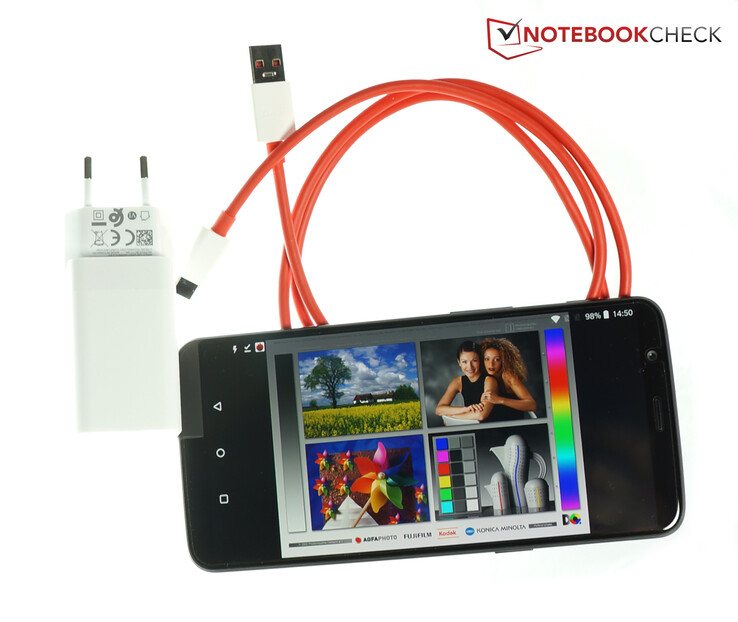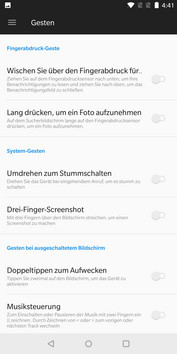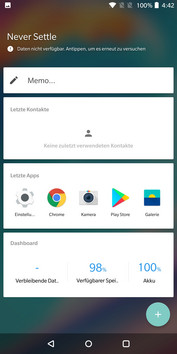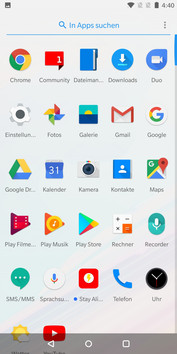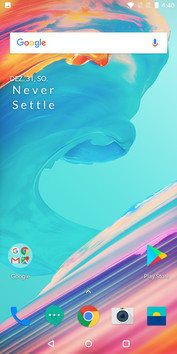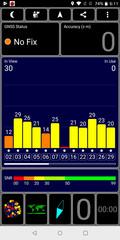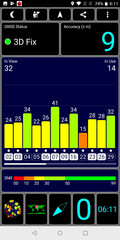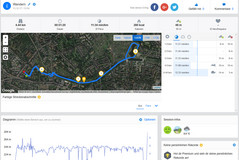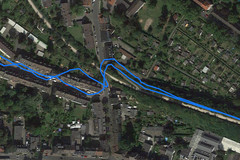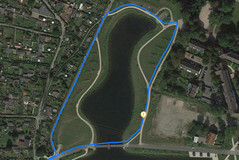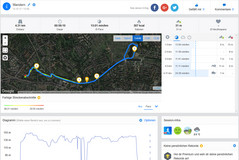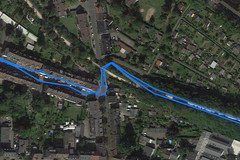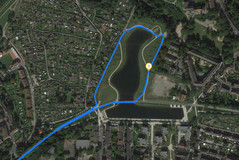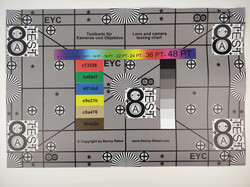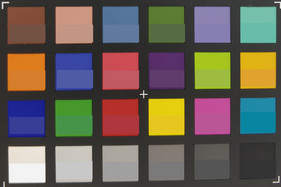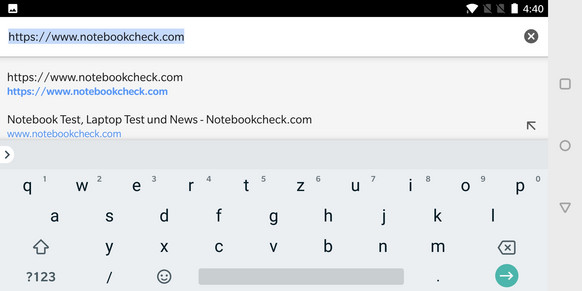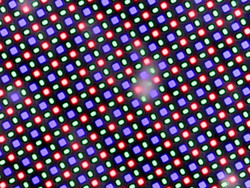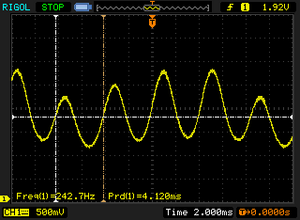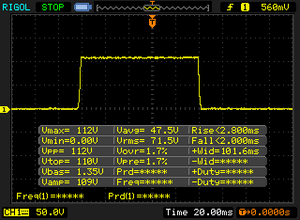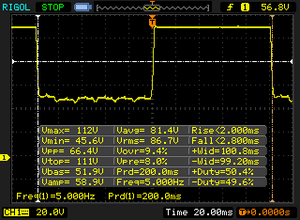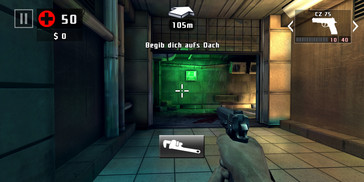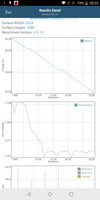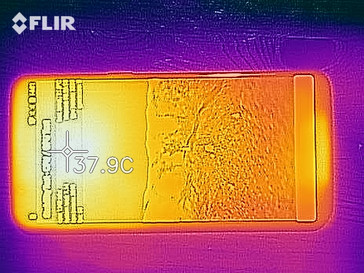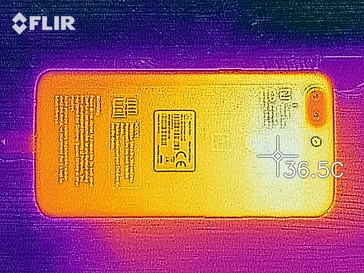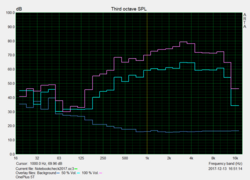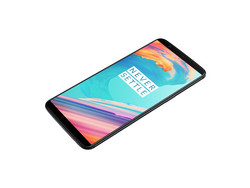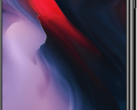OnePlus 5T Smartphone Review
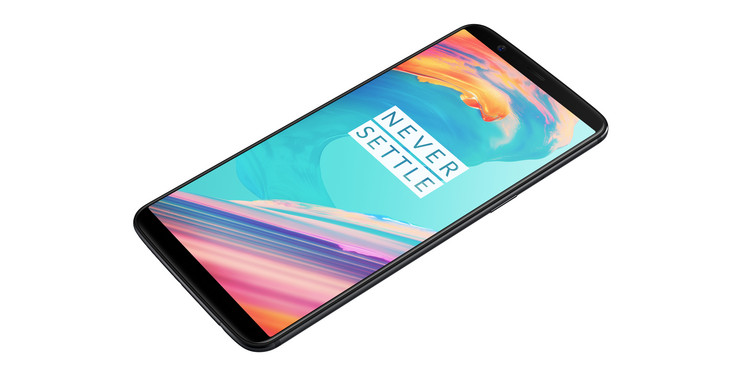
A new smartphone every six months. This is the rhythm OnePlus has chosen for itself. Of course, we must add that the manufacturer follows the rare strategy of only having one single model available at any given time, and focusing its efforts on that. The OnePlus 5T is now the seventh smartphone from OnePlus, and is a development of the OnePlus 5. (The number four was left out, as this number is considered unlucky in China. Instead, OnePlus produced the slightly cheaper OnePlus X.)
We were already very happy with the OnePlus 5, although it was not as good an offer as its predecessor and the camera could not really keep up with those of its high-end competitors. Then there were the strange design decisions OnePlus made: The screen was built in upside-down and the microphone channels were mixed up when filming. So, today's test unit has the opportunity to repair several small issues and has not increased in price: The version with 64 GB of storage and 6 GB RAM, is available for $500, while the other version (our test unit) with 128 GB of storage and 8 GB of RAM costs $560. This is still a good price for a smartphone that can boast high-end components.
The price of OnePlus smartphones is usually very stable as they are almost exclusively sold via the manufacturer's website. Flagship phones from Samsung and other manufacturers often drop in price quite quickly. The Sony Xperia XZ1, for example, is already available for less than $500 - and the Samsung Galaxy S8+ is coming close to this price range as well. The Asus Zenfone 4, on the other hand, was priced at $400 at launch, but offers less top-class features. The LG V30 also features the trendy 2:1 format, but its price remains high, as has the Google Pixel 2 XL.
Update 5/3/2018: OnePlus has released a new firmware for the OnePlus 5T. Details can be found in the software section of this review.
Case
Unusual: The OnePlus 5T has only grown minimally compared to its predecessor. The change from 16:9 to 2:1 screens normally means that the smartphone becomes longer, but less wide. This is not the case with the OnePlus 5T - it is actually a little wider and thicker than before. However, the differences are within one millimeter, so are hardly noticeable. Still, the OnePlus 5T is not as slim as the Samsung Galaxy S8+, for example, which is easy to use even for users with small hands.
This means that the OnePlus 5T is also missing this unusual, modern design - it looks quite similar to the OnePlus 5. The narrow bezels on the left and right of the screen remain, so the display does not appear as borderless as on the Samsung Galaxy S8+ or the Samsung Galaxy Note 8, where the edges of the screen are rounded.
Until now, the OnePlus 5T was only available in Midnight Black, but the manufacturer is known for occasionally offering special editions of its smartphones, for example, the OnePlus 5T Star Wars Edition. The fingerprint sensor has moved to the back, which enables significantly narrower bezels on the top and bottom compared to the OnePlus 5 or OnePlus 3T. But, this also means that the navigation keys below the screen are missing. The phone feels comfortable due to its rounded edges, but weighs quite a bit more than its predecessor at 162 grams (~ 5.7 oz).
The metal case is very stable, cannot be warped, makes no noise and does not give way under pressure. In any case, there would be no waves on the screen as it is an AMOLED.
Unusual: The OnePlus 5T has only grown minimally compared to its predecessor. The change from 16:9 to 2:1 screens normally means that the smartphone becomes longer, but less wide. This is not the case with the OnePlus 5T - it is actually a little wider and also thicker than before. But the differences are within one millimeter, so are hardly noticeable. Still, the OnePlus 5T is not as slim as the Samsung Galaxy S8+, for example, which is easy to use even for users with small hands.
This means that the OnePlus 5T is also missing this unusual, modern design - it basically looks quite similar to the OnePlus 5. The narrow bezels on the left and right of the screen remain, so the display does not appear as borderless as on the Samsung Galaxy S8+ or the Samsung Galaxy Note 8, where the edges of the screen are rounded.
Until now, the OnePlus 5T was only available in Midnight Black, but the manufacturer is known for occasionally offering special editions of its smartphones, like for example the OnePlus 5T Star Wars Edition. The fingerprint sensor has moved to the back, which enables significantly narrower bezels on the top and bottom compared to the OnePlus 5 or OnePlus 3T. But this also means that the navigation keys below the screen are missing. The phone feels comfortable due to its rounded edges, but weighs quite a bit more than its predecessor at 162 grams (~ 5.7 oz).
The metal case is very stable, cannot be warped, makes no noise and does not give way under pressure. In any case, there would be no waves on the screen as it is an AMOLED.
Connectivity
The version we are testing has 8 GB of RAM and 128 GB of fast UFS 2.1 storage, 111 GB of which can actually be used. The OnePlus 5T supports Dual-SIM, but does not have a microSD slot for storage expansion.
Like its predecessor, our test unit has a modern USB-C port, but this only reaches USB 2.0 speeds. The port still supports USB-OTG and NFC. The phone has a wide range of sensors, as well as Bluetooth 5.0 - although this will only reach its full potential when Android 8 is installed.
Software
Right after turning on the device, you will be offered a software update, which installs Oxygen OS 4.7.6. This means that the OnePlus 5T still runs on Android 7.1.1, but the update to Android 8 is already in beta phase. The security patches in our test unit are dated December 1, 2017, which is very recent.
Oxygen OS offers a slim and strong operating system based on Vanilla Android, but it features some small changes: The interface can be set to a dark theme, there is a different gallery app and expanded setting options. You can, for example, activate a blue light filter, configure what is shown in the status bar or even change the system font.
If you swipe to the right on the start screen, you will see the so-called "shelf", which enables fast access to contacts and apps. This function can also be turned off.
Update 2/1/2018: OnePlus has started rolling out the Oxygen OS 5.0.2 update (1,688 MB) based on Android 8.0 Oreo. This latest firmware also includes updates for the launcher (2.2) and the Gallery (2.0), Weather (1.9) and File Manager (1.7.6) apps. In addition, quick settings have been revamped and a security patch for the CPU (CVE-2017-13218) has been implemented. Security patches have been brought up to date (12/1/2017).
Update 5/3/2018: OnePlus has released OxygenOS 5.1.1 (764 MB) based on Android 8.1 Oreo. In addition, a bug concerning ringtones has been fixed, gesture recognition has been optimized, and the gaming mode has been enhanced.
Communication and GPS
Communication via the integrated Wi-Fi module, which also supports the very fast 802.11-ac network, is a little faster than on the OnePlus 5. But, it cannot keep up with the really fast LG V30. We measured full reception near the router and still had 3/4 reception at a distance of 10 meters (~33 ft) with three walls between the smartphone and the router. Pages load just as fast as near the router.
The OnePlus 5T even supports one LTE frequency more than its predecessor, which was already considered a real "World Phone" that should enable good reception all around the world. The maximum LTE speed is still at 600 MBit/s (download) and the phone does not support Gigabit-LTE (the Samsung Galaxy S8+ does, although it is not yet available in many countries). The OnePlus 5T's reception in the German Vodafone network in the city was always good - even indoors.
| Networking | |
| iperf3 transmit AX12 | |
| LG V30 | |
| Samsung Galaxy S8 Plus | |
| OnePlus 5T | |
| OnePlus 5 | |
| Sony Xperia XZ1 | |
| Asus ZenFone 4 ZE554KL | |
| Google Pixel 2 XL | |
| iperf3 receive AX12 | |
| LG V30 | |
| Sony Xperia XZ1 | |
| OnePlus 5T | |
| OnePlus 5 | |
| Samsung Galaxy S8 Plus | |
| Asus ZenFone 4 ZE554KL | |
| Google Pixel 2 XL | |
The OnePlus 5T cannot locate us indoors, even near the windows. But outdoors, the smartphone quickly locates us within 6 meters (~19.6 ft).
Our practical test - a bike ride with the OnePlus 5T and the professional navigation system Garmin Edge 500 - shows that the OnePlus 5T does very well and follows our path exactly. We were surprised to see that the usually very reliable Garmin Edge had some difficulties and was very vague in some areas. The OnePlus 5T had no problems: It almost always located us exactly on the paths.
Telephone and Call Quality
OnePlus made some small changes to Android's standard telephone app, and added some functions - like noise cancellation or automatically adding your home country's area code to numbers when you are roaming. Another nice extra: When you set the system theme to "dark", the telephone app also has a dark background and light text. The app itself works just like in most other android smartphones: There is a list for speed dialing, a list with recent calls and then contacts. You can switch between these lists via the tabs and the number pad opens when you tap a button at the bottom of the app.
The call quality is good both via the earpiece and via the speaker, which can get quite loud. Voices sound clear and we only noticed slight distortions at a very high volume. The microphone transmits our voice well, both when talking loudly and very quietly.
Cameras
Unlike other manufacturers, OnePlus seems to be experimenting with the perfect concept for the dual camera. While the OnePlus 5 was equipped with one wide-angle and one telephoto lens, the two lenses on our current test unit both have the same focal length. The resolution has not changed: One of the lenses has 16, the other 20 megapixels - the lens with 16 megapixels is the same model as in the OnePlus 5. There is no optical zoom, but the aperture of the 20-megapixel lens has increased, so pictures taken with bad lighting should turn out better. While the previous camera was developed with DxOMark, this has not been mentioned for this version and the OnePlus 5T has not (yet) been listed on the DxOMark website.
The images taken with the main camera look good, the quality has improved significantly compared to the OnePlus 5: The images are sharper and lighter, but seem to have a slight blue cast. The camera of the iPhone X cannot offer better details, while that of the Huawei Mate 10 Pro displays more details, for example, of the floor or wall in the second image. The notebookcheck rabbit in the first picture also looks quite a bit sharper in the photo taken with Huawei's flagship phone. In low light, the OnePlus 5T does a good job, but the Huawei Mate 10 Pro still performs a little better with very little image noise and a sharper image.
So, while the main camera of the OnePlus 5T has better image quality that can keep up with several high-end smartphones, other manufacturers offer the best performance in this area. We were particularly bothered by the missing optical image stabilizer, which many flagship phones are equipped with nowadays. Portrait mode creates a good bokeh effect.
The main camera records videos at a maximum of 4K and 30 fps. It can even reach 60 fps at 1080p. Sharpness and image quality are very good and lighting adapts quickly and reliably. Videos can also be made in slow motion at a maximum of 120 fps; time-lapse videos can be recorded in 1080p.
The front camera still has a resolution of 16 megapixels and variable focus. It has nice colors, and brightness and details are good.
We took a look at the image quality of the main camera in our lab under controlled lighting conditions and with the usual test images. This showed good sharpness when displaying the reference card, although the edges are not quite clear and there were some blotches on large areas of color. Text is displayed sharply on colored background. Color display is good, only whites and light gray scales are not displayed completely correctly.
Accessories and Warranty
Apart from the rather large DashCharger and the chic USB cable in the manufacturer's colors red and white, OnePlus has included a SIM tool and even a silicone bumper for the case. As usual, you can find a wide range of accessories on the manufacturer's website, which is also available at a discount in bundles. Cases in various designs and materials can be purchased for between $20 and $30, an additional charger costs $33 and the OnePlus Bullets are available for $20.
OnePlus offers a one-year warranty on its devices. Please see our Guarantees, Return Policies and Warranties FAQ for country-specific information.
Input Devices & Handling
The keyboard is Google's GBoard, but other keyboards can easily be downloaded from the Google Play Store. GBoard is Android's standard keyboard and offers many functions.
The touchscreen is very sensitive and responds quickly and reliably even in the corners. The new screen format has pushed the fingerprint sensor to the back, but it still works reliably, and very quickly wakes up the phone out of standby. On the right side of the device is a standby button, on the left the volume rocker. The layout is not perfect as you often have to change your hold to reach the volume buttons properly. Above the volume rocker is a notifications switch. OnePlus is famous for this button and it enables you to quickly set the phone to "do not disturb" or "silent" mode. The various modes can be configured individually.
In the settings, you will find many gestures that can be used on the OnePlus 5T: For example, the fingerprint sensor can be used to open the notification slider, you can tap the screen twice to get it out of standby mode or simply turn it over to turn off the ringtone. There are many more gestures that can be configured individually, for example, you can draw letters on the screen that trigger functions defined by you.
OnePlus has also picked up on the current trend of face recognition and has made a little change: In order to activate face recognition, you first have to wake the smartphone via the standby button, which then activates the camera and immediately unlocks the phone once a face is recognized. This is a clever, intuitive solution that saves energy and reduces security worries over a camera that is constantly active and recognizes your own face. However, face recognition is only based on software, unlike Apple's Face ID that uses an infrared camera or 3D recognition, which means that you need good lighting and the feature can be tricked quite easily by holding an image of the user's face in front of the camera.
Display
The 6.01-inch AMOLED screen in the trendy 2:1 format has a resolution of 2160x1080 pixels, which corresponds to a slightly wider Full-HD screen. Other screens in high-end smartphones have even higher resolutions, for example, the Google Pixel 2 XL or the Samsung Galaxy S8+. But still, the display is sharp and you cannot see individual pixels even at close inspection. The average brightness of 423.1 cd/m² is sufficient; LCD screens have very different results. Samsung has added a function to its Galaxy flagship phones, which enables the brightness sensor to increase the brightness for a short duration if necessary, but usually, the screen of the Galaxy S8+ is a little darker than that of the OnePlus 5T. As expected, brightness distribution is even and large areas of color appear consistent.
| |||||||||||||||||||||||||
Brightness Distribution: 92 %
Center on Battery: 425 cd/m²
Contrast: ∞:1 (Black: 0 cd/m²)
ΔE ColorChecker Calman: 2.1 | ∀{0.5-29.43 Ø4.78}
ΔE Greyscale Calman: 2.5 | ∀{0.09-98 Ø5}
Gamma: 2.32
CCT: 6455 K
| OnePlus 5T AMOLED, 2160x1080, 6" | Sony Xperia XZ1 IPS, 1920x1080, 5.2" | Asus ZenFone 4 ZE554KL IPS, 1920x1080, 5.5" | Google Pixel 2 XL P-OLED, 2880x1440, 6" | LG V30 OLED, 2880x1440, 6" | Samsung Galaxy S8 Plus Super AMOLED, 2960x1440, 6.2" | OnePlus 5 AMOLED, 1920x1080, 5.5" | |
|---|---|---|---|---|---|---|---|
| Screen | -23% | -47% | -16% | -61% | 20% | 6% | |
| Brightness middle (cd/m²) | 425 | 620 46% | 656 54% | 415 -2% | 432 2% | 560 32% | 426 0% |
| Brightness (cd/m²) | 423 | 610 44% | 634 50% | 420 -1% | 428 1% | 562 33% | 431 2% |
| Brightness Distribution (%) | 92 | 93 1% | 93 1% | 87 -5% | 87 -5% | 93 1% | 93 1% |
| Black Level * (cd/m²) | 0.79 | 0.4 | |||||
| Colorchecker dE 2000 * | 2.1 | 4.2 -100% | 5.3 -152% | 2.7 -29% | 4.18 -99% | 1.7 19% | 1.6 24% |
| Colorchecker dE 2000 max. * | 3.4 | 5.8 -71% | 7.8 -129% | 4.3 -26% | 8.53 -151% | 3.4 -0% | 4.1 -21% |
| Greyscale dE 2000 * | 2.5 | 3.9 -56% | 5.2 -108% | 3.3 -32% | 5.3 -112% | 1.6 36% | 1.7 32% |
| Gamma | 2.32 95% | 2.02 109% | 2.22 99% | 2.36 93% | 2.33 94% | 2.13 103% | 2.25 98% |
| CCT | 6455 101% | 7086 92% | 7905 82% | 6787 96% | 7487 87% | 6435 101% | 6329 103% |
| Contrast (:1) | 785 | 1640 | |||||
| Color Space (Percent of AdobeRGB 1998) (%) | 81.57 | ||||||
| Color Space (Percent of sRGB) (%) | 99.87 |
* ... smaller is better
Screen Flickering / PWM (Pulse-Width Modulation)
| Screen flickering / PWM detected | 242.7 Hz | ||
The display backlight flickers at 242.7 Hz (worst case, e.g., utilizing PWM) . The frequency of 242.7 Hz is relatively low, so sensitive users will likely notice flickering and experience eyestrain at the stated brightness setting and below. In comparison: 53 % of all tested devices do not use PWM to dim the display. If PWM was detected, an average of 8108 (minimum: 5 - maximum: 343500) Hz was measured. | |||
Due to the AMOLED screen, we do not need to worry about the black value and contrast: Both are perfect and colors appear strong and vivid. Sensitive users might be bothered by the PWM flickering at only 243 Hz.
You can choose between various color spaces in the settings menu: The standard setting, sRGB, AdobeRGB, DCI P3 and a personalized setting for the white balance. We have tested the three available color spaces with the spectrophotometer and the CalMAN software in our lab tests. Color accuracy is very good in general and compared to other smartphones - the best coverage is in sRGB mode. AdobeRGB shows a noticeable blue cast, but color space coverage is very good for all color spaces, although the CalMAN results are more like guidelines.
Display Response Times
| ↔ Response Time Black to White | ||
|---|---|---|
| 4.8 ms ... rise ↗ and fall ↘ combined | ↗ 2.8 ms rise | |
| ↘ 2 ms fall | ||
| The screen shows very fast response rates in our tests and should be very well suited for fast-paced gaming. In comparison, all tested devices range from 0.1 (minimum) to 240 (maximum) ms. » 16 % of all devices are better. This means that the measured response time is better than the average of all tested devices (20.2 ms). | ||
| ↔ Response Time 50% Grey to 80% Grey | ||
| 4.8 ms ... rise ↗ and fall ↘ combined | ↗ 2 ms rise | |
| ↘ 2.8 ms fall | ||
| The screen shows very fast response rates in our tests and should be very well suited for fast-paced gaming. In comparison, all tested devices range from 0.165 (minimum) to 636 (maximum) ms. » 15 % of all devices are better. This means that the measured response time is better than the average of all tested devices (31.6 ms). | ||
The OnePlus 5T can be used outdoors, although reflections on the screen can occasionally make it difficult to read the screen in very bright surroundings. The brightness sensor reacts quite quickly, but is occasionally a little dark. By the way, the dark lines on the image come from the PWM flickering mentioned above, which the smartphone uses to lower the brightness. With a naked eye, they are only perceivable as a slight flickering by sensitive users.
The viewing angles are good in general, but the lack of color at very wide angles is noticeable.
Performance
The results are a little better than those of most devices equipped with the Snapdragon 835. We would like to congratulate the OnePlus 5T for it, but unfortunately, there is a slight bitter aftertaste: OnePlus has been caught manipulating its benchmark results on several occasions - for example by setting the device to allow higher processor temperatures when it recognizes benchmarks or manipulating media's test units. We already mentioned this in our review of the OnePlus 5. According to experts from www.xda-developers.com (who first noticed the manipulations on the OnePlus 5), the manufacturer is supposed to have let go of this habit for the OnePlus 5T. To be sure, we did not run the benchmarks on the device provided by OnePlus, but on one we purchased ourselves. As the results are still very high, we are carefully optimistic that OnePlus might have really managed to get the most out of the processor without having to cheat.
| AnTuTu v6 - Total Score (sort by value) | |
| OnePlus 5T | |
| Sony Xperia XZ1 | |
| Asus ZenFone 4 ZE554KL | |
| Google Pixel 2 XL | |
| LG V30 | |
| Samsung Galaxy S8 Plus | |
| OnePlus 5 | |
| Huawei Mate 10 Pro | |
| PCMark for Android | |
| Work performance score (sort by value) | |
| OnePlus 5T | |
| Sony Xperia XZ1 | |
| Asus ZenFone 4 ZE554KL | |
| Google Pixel 2 XL | |
| LG V30 | |
| Samsung Galaxy S8 Plus | |
| OnePlus 5 | |
| Huawei Mate 10 Pro | |
| Work 2.0 performance score (sort by value) | |
| OnePlus 5T | |
| Sony Xperia XZ1 | |
| Asus ZenFone 4 ZE554KL | |
| Google Pixel 2 XL | |
| LG V30 | |
| Samsung Galaxy S8 Plus | |
| OnePlus 5 | |
| Huawei Mate 10 Pro | |
| GFXBench (DX / GLBenchmark) 2.7 | |
| T-Rex Onscreen (sort by value) | |
| OnePlus 5T | |
| Sony Xperia XZ1 | |
| Asus ZenFone 4 ZE554KL | |
| Google Pixel 2 XL | |
| LG V30 | |
| Samsung Galaxy S8 Plus | |
| OnePlus 5 | |
| Huawei Mate 10 Pro | |
| 1920x1080 T-Rex Offscreen (sort by value) | |
| OnePlus 5T | |
| Sony Xperia XZ1 | |
| Asus ZenFone 4 ZE554KL | |
| Google Pixel 2 XL | |
| LG V30 | |
| Samsung Galaxy S8 Plus | |
| OnePlus 5 | |
| Huawei Mate 10 Pro | |
| GFXBench 3.0 | |
| on screen Manhattan Onscreen OGL (sort by value) | |
| OnePlus 5T | |
| Sony Xperia XZ1 | |
| Asus ZenFone 4 ZE554KL | |
| Google Pixel 2 XL | |
| LG V30 | |
| Samsung Galaxy S8 Plus | |
| OnePlus 5 | |
| Huawei Mate 10 Pro | |
| 1920x1080 1080p Manhattan Offscreen (sort by value) | |
| OnePlus 5T | |
| Sony Xperia XZ1 | |
| Asus ZenFone 4 ZE554KL | |
| Google Pixel 2 XL | |
| LG V30 | |
| Samsung Galaxy S8 Plus | |
| OnePlus 5 | |
| Huawei Mate 10 Pro | |
| GFXBench 3.1 | |
| on screen Manhattan ES 3.1 Onscreen (sort by value) | |
| OnePlus 5T | |
| Sony Xperia XZ1 | |
| Asus ZenFone 4 ZE554KL | |
| Google Pixel 2 XL | |
| LG V30 | |
| Samsung Galaxy S8 Plus | |
| OnePlus 5 | |
| Huawei Mate 10 Pro | |
| 1920x1080 Manhattan ES 3.1 Offscreen (sort by value) | |
| OnePlus 5T | |
| Sony Xperia XZ1 | |
| Asus ZenFone 4 ZE554KL | |
| Google Pixel 2 XL | |
| LG V30 | |
| Samsung Galaxy S8 Plus | |
| OnePlus 5 | |
| Huawei Mate 10 Pro | |
| GFXBench | |
| on screen Car Chase Onscreen (sort by value) | |
| OnePlus 5T | |
| Sony Xperia XZ1 | |
| Asus ZenFone 4 ZE554KL | |
| Google Pixel 2 XL | |
| LG V30 | |
| Samsung Galaxy S8 Plus | |
| OnePlus 5 | |
| Huawei Mate 10 Pro | |
| 1920x1080 Car Chase Offscreen (sort by value) | |
| OnePlus 5T | |
| Sony Xperia XZ1 | |
| Asus ZenFone 4 ZE554KL | |
| Google Pixel 2 XL | |
| LG V30 | |
| Samsung Galaxy S8 Plus | |
| OnePlus 5 | |
| Huawei Mate 10 Pro | |
The OnePlus 5T displays websites very quickly, often faster than many other high-end smartphones. You can also feel the difference compared to its predecessor, which might also be due to improvements to the Chrome browser - which has had four new versions since the OnePlus 5 was tested. The OnePlus 5T even does a good job at displaying demanding HTML-5 websites, such as the flipper game on letsplay.ouigo.com: The game loads quickly and can be played without jerks.
| JetStream 1.1 - Total Score | |
| OnePlus 5 (Chrome 59) | |
| OnePlus 5T (Chrome 63) | |
| Google Pixel 2 XL (Chrome 62) | |
| Samsung Galaxy S8 Plus (Samsung Browser 5.2) | |
| Sony Xperia XZ1 (Chrome 61) | |
| Huawei Mate 10 Pro (Chrome 61) | |
| LG V30 (Chrome 62) | |
| Asus ZenFone 4 ZE554KL (Chrome 62) | |
| Octane V2 - Total Score | |
| Samsung Galaxy S8 Plus (Samsung Browser 5.2) | |
| OnePlus 5T (Chrome 63) | |
| OnePlus 5 (Chrome 59) | |
| Google Pixel 2 XL (Chrome 62) | |
| LG V30 (Chrome 62) | |
| Huawei Mate 10 Pro (Chrome 61) | |
| Sony Xperia XZ1 (Chrome 61) | |
| Asus ZenFone 4 ZE554KL (Chrome 62) | |
| Mozilla Kraken 1.1 - Total | |
| Asus ZenFone 4 ZE554KL (Chrome 62) | |
| LG V30 (Chrome 62) | |
| Huawei Mate 10 Pro (Chrome 61) | |
| Google Pixel 2 XL (Chrome 62) | |
| Sony Xperia XZ1 (Chrome 61) | |
| OnePlus 5T (Chrome 63) | |
| OnePlus 5 (Chrome 59) | |
| Samsung Galaxy S8 Plus (Samsung Browser 5.2) | |
| WebXPRT 2015 - Overall | |
| Google Pixel 2 XL (Chrome 62) | |
| OnePlus 5T (Chrome 63) | |
| Sony Xperia XZ1 (Chrome 61) | |
| OnePlus 5 (Chrome 59) | |
| Huawei Mate 10 Pro (Chrome 61) | |
| Samsung Galaxy S8 Plus (Samsung Browser 5.2) | |
| LG V30 (Chrome 62) | |
| Asus ZenFone 4 ZE554KL (Chrome 62) | |
* ... smaller is better
The OnePlus 5T is equipped with fast UFS 2.1 storage, which can make good use of its speed. It usually does not take long to load data. The Huawei P10 Plus is even faster at accessing its storage. Compared to the OnePlus 5, the speed of accessing the storage has stayed the same.
| OnePlus 5T | Sony Xperia XZ1 | Asus ZenFone 4 ZE554KL | Google Pixel 2 XL | LG V30 | Samsung Galaxy S8 Plus | OnePlus 5 | |
|---|---|---|---|---|---|---|---|
| AndroBench 3-5 | -4% | -43% | 5% | -25% | -6% | 1% | |
| Sequential Read 256KB (MB/s) | 699 | 679 -3% | 287.4 -59% | 760 9% | 669 -4% | 788 13% | 748 7% |
| Sequential Write 256KB (MB/s) | 203.4 | 204.4 0% | 205.3 1% | 195.3 -4% | 193.2 -5% | 194.2 -5% | 201.5 -1% |
| Random Read 4KB (MB/s) | 138.1 | 156.6 13% | 68.6 -50% | 170.6 24% | 78.2 -43% | 127.2 -8% | 141 2% |
| Random Write 4KB (MB/s) | 20 | 14.93 -25% | 7.59 -62% | 17.84 -11% | 10.21 -49% | 15.27 -24% | 19.3 -3% |
| Sequential Read 256KB SDCard (MB/s) | 65.5 ? | 86.9 ? | 62.8 | 71.1 ? | |||
| Sequential Write 256KB SDCard (MB/s) | 47.71 ? | 66.5 ? | 47.2 | 57.2 ? |
Games
We noticed that games have very short loading times and allow for fast navigating. This is due to the strong processor. The results of GameBench are very good: Asphalt 8 and Dead Trigger 2 are displayed smoothly at 30 and even 60 fps. Simple games such as Temple Run 2 also run smoothly and load quickly.
As the touchscreen and position sensor are reliable and respond quickly, you should have no difficulties when playing games on the OnePlus 5T.
| Asphalt 8: Airborne | |||
| Settings | Value | ||
| high | 30 fps | ||
| very low | 30 fps | ||
| Dead Trigger 2 | |||
| Settings | Value | ||
| high | 60 fps | ||
Emissions
Temperature
The heat development is rather similar to that of the OnePlus 5, particularly if you take into consideration the different room temperatures during our measurements. Like with the predecessor, the measured temperatures are absolutely fine and limited to small areas.
The back of the OnePlus 5 heated up quite a lot during the GFXBench battery benchmark, and the same goes for the OnePlus 5T. However, the drop in performance is not quite as bad as it was in the OnePlus 5: The performance only dropped by 3% after 30 rounds of the same benchmark sequence.
(+) The maximum temperature on the upper side is 36.1 °C / 97 F, compared to the average of 35.2 °C / 95 F, ranging from 21.9 to 247 °C for the class Smartphone.
(+) The bottom heats up to a maximum of 33.7 °C / 93 F, compared to the average of 34 °C / 93 F
(+) In idle usage, the average temperature for the upper side is 25.7 °C / 78 F, compared to the device average of 32.9 °C / 91 F.
Speakers
The speaker of the OnePlus 5T is a little quieter than that of its predecessor, but can still become quite loud. It produces noticeably more low mid frequencies than the speaker of the OnePlus 5, while the high frequencies were tuned down a little. This creates a warmer, more balanced sound. The best speaker that we have ever tested in a smartphone is that of the Huawei P10 Plus. It offers an even more balanced sound than the OnePlus 5T, although the OnePlus 5T comes quite close to the ideal, and can be quite a bit louder.
You can use aptX HD via Bluetooth to transmit a relatively clear sound, and the menu even lets you choose the protocol that you would like to use for wireless sound transmission. The 3.5-mm jack also transmits clear, noise-free sound to speakers or headphones. You can adjust the sound to your personal preferences with the help of the included Equalizer.
OnePlus 5T audio analysis
(+) | speakers can play relatively loud (86.3 dB)
Bass 100 - 315 Hz
(-) | nearly no bass - on average 21.2% lower than median
(±) | linearity of bass is average (9.9% delta to prev. frequency)
Mids 400 - 2000 Hz
(+) | balanced mids - only 3% away from median
(+) | mids are linear (6% delta to prev. frequency)
Highs 2 - 16 kHz
(±) | higher highs - on average 5.9% higher than median
(+) | highs are linear (3.8% delta to prev. frequency)
Overall 100 - 16.000 Hz
(±) | linearity of overall sound is average (18.4% difference to median)
Compared to same class
» 19% of all tested devices in this class were better, 9% similar, 72% worse
» The best had a delta of 11%, average was 35%, worst was 134%
Compared to all devices tested
» 40% of all tested devices were better, 8% similar, 52% worse
» The best had a delta of 4%, average was 24%, worst was 134%
OnePlus 5 audio analysis
(+) | speakers can play relatively loud (87.8 dB)
Bass 100 - 315 Hz
(-) | nearly no bass - on average 30.9% lower than median
(±) | linearity of bass is average (9.4% delta to prev. frequency)
Mids 400 - 2000 Hz
(+) | balanced mids - only 4.8% away from median
(+) | mids are linear (5% delta to prev. frequency)
Highs 2 - 16 kHz
(+) | balanced highs - only 3.2% away from median
(+) | highs are linear (3.2% delta to prev. frequency)
Overall 100 - 16.000 Hz
(±) | linearity of overall sound is average (20.4% difference to median)
Compared to same class
» 34% of all tested devices in this class were better, 9% similar, 57% worse
» The best had a delta of 11%, average was 35%, worst was 134%
Compared to all devices tested
» 53% of all tested devices were better, 8% similar, 39% worse
» The best had a delta of 4%, average was 24%, worst was 134%
Frequency diagram in comparison (check boxes can be turned on/off!)
Battery Runtime
Power Consumption
Luckily, OnePlus has managed to reduce the average power consumption of the 5T under load, which was rather high in the OnePlus 5. According to our measurements, it now needs less than half of the OnePlus 5's power consumption, which is very low compared to other smartphones as well. This should be good news for the battery runtimes. In total, the OnePlus 5T is an energy-efficient high-end smartphone.
| Off / Standby | |
| Idle | |
| Load |
|
Key:
min: | |
| OnePlus 5T 3300 mAh | Sony Xperia XZ1 2700 mAh | Asus ZenFone 4 ZE554KL 3300 mAh | Google Pixel 2 XL 3520 mAh | LG V30 3300 mAh | Samsung Galaxy S8 Plus 3500 mAh | OnePlus 5 3300 mAh | |
|---|---|---|---|---|---|---|---|
| Power Consumption | -46% | -36% | -38% | -2% | 4% | -28% | |
| Idle Minimum * (Watt) | 0.58 | 0.51 12% | 0.84 -45% | 1.28 -121% | 0.72 -24% | 0.68 -17% | 0.73 -26% |
| Idle Average * (Watt) | 1.44 | 2.16 -50% | 2.31 -60% | 1.87 -30% | 1.37 5% | 1.13 22% | 1.44 -0% |
| Idle Maximum * (Watt) | 1.53 | 2.23 -46% | 2.33 -52% | 1.89 -24% | 1.41 8% | 1.16 24% | 1.5 2% |
| Load Average * (Watt) | 3.17 | 7.45 -135% | 4.76 -50% | 3.73 -18% | 3.46 -9% | 4.69 -48% | 6.91 -118% |
| Load Maximum * (Watt) | 8.54 | 9.28 -9% | 6.39 25% | 8.08 5% | 7.83 8% | 5.24 39% | 8.51 -0% |
* ... smaller is better
Battery Runtime
If you are sparing, you will keep going for longer. If this were a saying, it would definitely apply to the OnePlus 5T: The battery runtimes have improved drastically since the OnePlus 5 and the phone now lasts 12 hours while surfing via Wi-Fi. This should be enough for the phone to last one and a half working days, even if it is in constant use. Depending on the player, you can watch films for even longer. Only the LG V30 can beat these results; the Samsung Galaxy S8+ has similar runtimes as our test unit.
You can activate the power-saving mode if you want to preserve the battery. DashCharge makes recharging the battery very quick: The smartphone needs just over 1:30 hours to fully recharge. Unfortunately, the device does not support wireless charging.
| OnePlus 5T 3300 mAh | Sony Xperia XZ1 2700 mAh | Asus ZenFone 4 ZE554KL 3300 mAh | Google Pixel 2 XL 3520 mAh | LG V30 3300 mAh | Samsung Galaxy S8 Plus 3500 mAh | OnePlus 5 3300 mAh | |
|---|---|---|---|---|---|---|---|
| Battery runtime | -21% | -7% | -6% | 6% | -2% | -17% | |
| Reader / Idle (h) | 29.2 | 26.9 -8% | 27.8 -5% | 28.4 -3% | 31.9 9% | 26.1 -11% | 25.6 -12% |
| H.264 (h) | 13.3 | 9.7 -27% | 11.6 -13% | 11.2 -16% | 13.7 3% | 12.4 -7% | 10.4 -22% |
| WiFi v1.3 (h) | 12 | 10 -17% | 9.4 -22% | 9.7 -19% | 12.9 8% | 12.3 3% | 8.6 -28% |
| Load (h) | 4.3 | 2.9 -33% | 4.8 12% | 5 16% | 4.5 5% | 4.6 7% | 4.1 -5% |
Pros
Cons
Verdict
The OnePlus 5T is a great smartphone for smart spenders: A good price, low power consumption and a great price-performance ratio. The OnePlus 5T is currently one of the fastest smartphones available that also offers a very durable battery, good speakers and great cameras. The flagship phones of large manufacturers still offer slightly better cameras, for example, our test unit lacks an optical image stabilizer. The LTE speeds of the OnePlus 5T are also not quite as fast as those of other smartphones, but you will hardly ever notice this. The software does not take up too much space and is well cared for by the manufacturer. The smartphone should have reception anywhere in the world and Wi-Fi speeds are very good. The GPS is precise, the fingerprint sensor exact and face recognition a nice and useful gimmick.
The device has a speedy storage device that offers a generous 128 GB - this, however, cannot be expanded by a microSD card. Comfortable handling, a sharp display with strong colors, and acceptable temperatures complete the OnePlus 5T. Even lovers of the predecessor might want to think about an update: It will give you a slightly better speaker, better cameras and a significantly longer-lasting battery. And of course, a modern design with slim bezels.
The manufacturer has managed to create a great high-end smartphone with hardly any shortcomings and straightens out the predecessor's few deficiencies. Long battery runtimes, high system performance, good cameras and a strong sound all make this smartphone a good buy.
Although the OnePlus 5T is not quite as bezel-free or slim as the Galaxy S8+, the OnePlus 5T is a great development from its predecessor that has up until now managed to stay faux pas free (unlike the OnePlus 5 when it was launched). So we can definitely state: The flagship killer is back!
OnePlus 5T
- 01/03/2018 v6 (old)
Florian Wimmer




